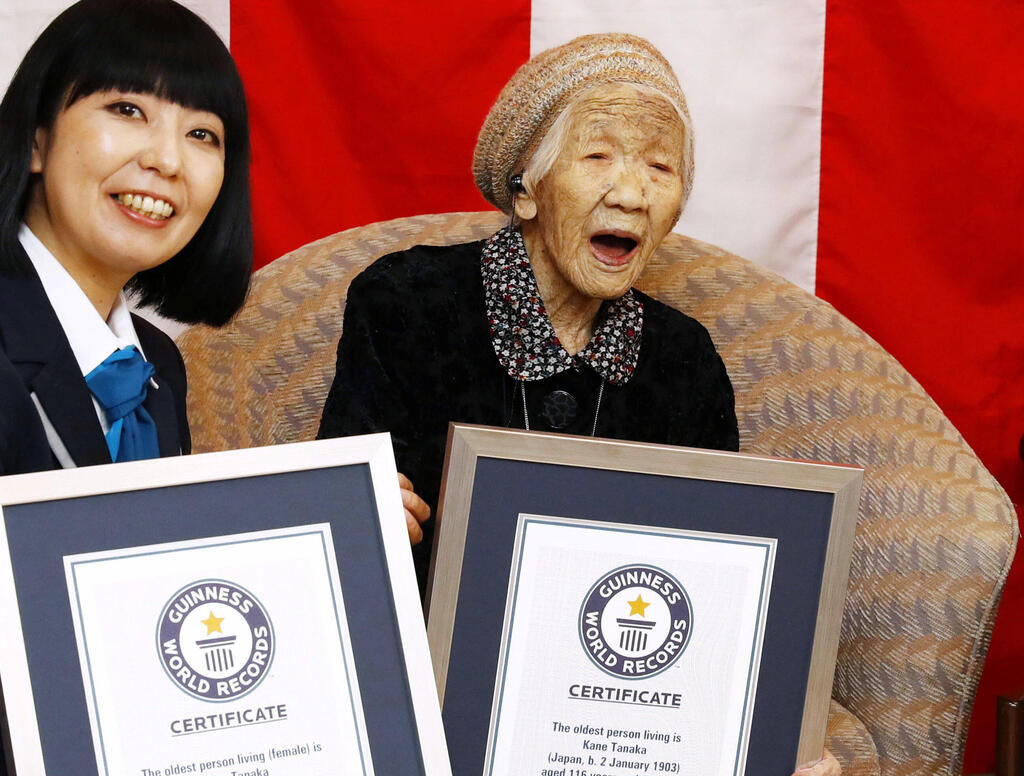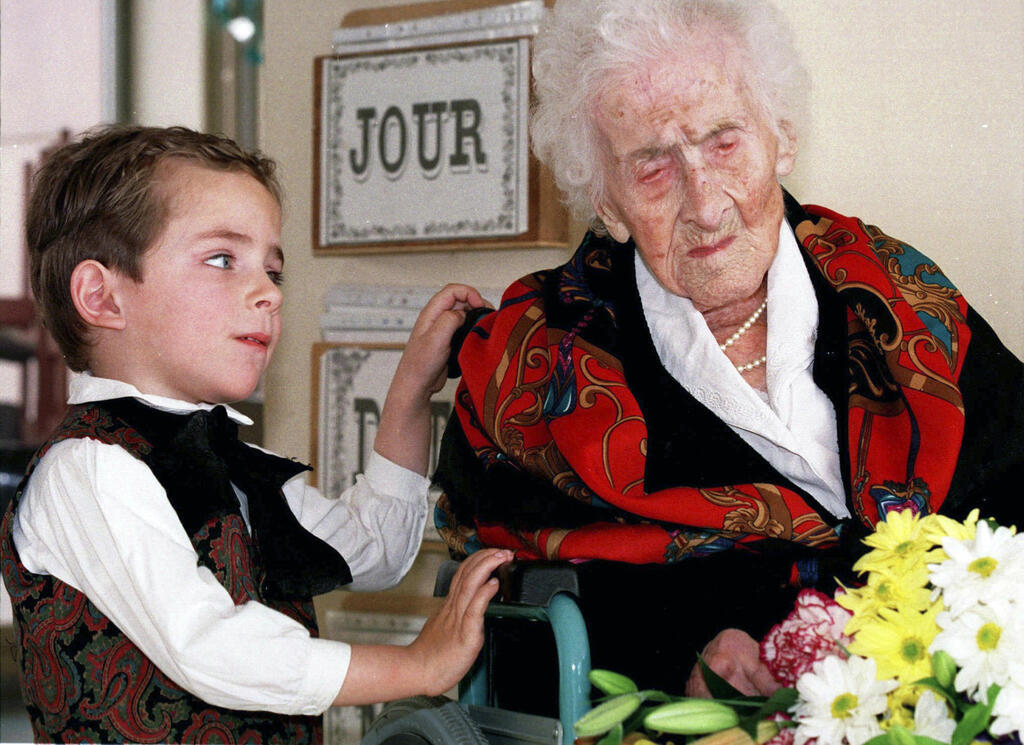Getting your Trinity Audio player ready...
Born on January 2, 1903, in Fukuoka Prefecture, Kyushu, Japan, Kana Ota, now known as Tanaka, embarked on a remarkable journey. At 19, she wed Hideo Tanaka and together opened a small shop selling noodles and traditional Japanese desserts. Their family grew to five children, with an adopted child joining after a tragic loss.
Read more:
After retiring, Mrs. Tanaka fulfilled her lifelong dream by visiting the United States, savoring new sweet delicacies and relishing three cups of coffee daily. Despite battling colon cancer in her old age, she triumphed over it. Kana Tanaka's story is ordinary in its essence, except for one extraordinary fact—she is still alive today.
Should she outlive June 17, 2025, Kana Tanaka will etch her name in history as the oldest person on record, surpassing the current record holder, Jeanne Calment of France. For now, Tanaka proudly holds the title of the oldest living person in the world.
Among the approximately 600 individuals who have surpassed the age of 110, a staggering 90% are women, and the current ranking of the 47 oldest living people also predominantly features women. This gender disparity is a consistent pattern worldwide, spanning continents, countries and eras.
If we compare a group of 100 boys and 100 girls born at the start of 2020, statistics reveal that 46 boys and 61 girls—a significant one-third more girls—will reach the age of 80 and continue living into the 22nd century. This longevity gap has persisted throughout history, with the exception of a brief period in 1870 in the United States. One question lingers, though: Why do women consistently outlive men?
Identical chromosomes - a recipe for longevity
In the 1970s, researchers delved into the intriguing question of why women tend to live longer than men. Their research led them to explore the stark disparities in lifestyle choices between the two genders. One notable factor was the prevalence of smoking, with a higher percentage of men succumbing to this habit compared to women. Moreover, examining the differing causes of death shed light on the subject: men were found to have a significantly higher suicide rate.
Cultural norms also played a role, with women in Western societies generally exhibiting more health consciousness, following medical advice diligently, refraining from excessive smoking and drinking, adhering to laws and taking fewer risks. In contrast, men often embraced a more daring and adventurous lifestyle, engaging in extreme sports, pursuing ambitious goals and sometimes experiencing flamboyant mid-life crises.
Research conducted in 1998 examined the life expectancy of men and women across various countries, reinforcing the hypothesis based on behavioral factors. Interestingly, in developing nations, women continue to have a longer life expectancy, although the gender gap is narrower compared to Western countries.
Surprisingly, even when considering mortality data among older individuals, where the inclination for risk-taking diminishes and men generally adopt a more cautious approach, women still outlive men. This suggests that factors beyond behavioral and cultural influences contribute to the longevity advantage enjoyed by women.
In recent times, a shift in focus among ageism researchers is observed, with a greater emphasis on natural sciences rather than behavioral sciences. Steven Ostrad, a researcher from the University of Alabama at Birmingham, conducted experiments on male mice, administering drugs that extended their lifespan but had no similar effect on female mice.
Ostrad's findings suggest that just as there are inherent differences between mice, there are distinctions between men and women. This observation highlights the need for a scientific explanation for the longevity gap and, while there is no definitive answer yet, ongoing research brings us closer to unraveling this intriguing phenomenon.
In recent years, a significant shift has occurred in the field of research due to a global directive from health institutes. The directive mandates the inclusion of both male and female animals in studies examining gender differences. While seemingly trivial, it marks a departure from the previous practice of conducting experiments on only one gender due to budget and time constraints.
Prioritizing scientific accuracy over financial considerations, researchers now recognize the importance of comprehensive investigations. In this ongoing scientific endeavor, we embrace the spirit of exploration and discovery, akin to the curious nature of little Einsteins.
In a recent study conducted by researchers at the University of New South Wales, an interesting correlation was discovered. After examining 229 animal species, the researchers found that species with identical chromosomes tend to have a longer average lifespan. Specifically, in mammals, females with XX chromosomes and males with XY chromosomes showed this pattern.
Similarly, in birds, males with ZZ chromosomes and females with ZW chromosomes exhibited the same trend. Across these species, individuals with identical chromosome pairs lived approximately 17.6% longer on average than those with different chromosomes. This finding sheds light on the potential influence of chromosomal composition on lifespan.
In the realm of human genetics, an interesting discovery has been made regarding the X and Y chromosomes. Traditionally, it was believed that one of the X chromosomes in females was "disabled." However, recent findings have shown that approximately 15% of this so-called "silent" X chromosome in women is actually functional to some extent. This means that if a woman encounters issues with one X chromosome, the other X chromosome can come to the rescue. This support can have significant effects, sometimes even life-saving.
The gap will only increase
Let's shift our focus to the present, where we can recognize a significant advantage in women when it comes to reproduction. The qualities associated with women's ability to bear children, such as resilience to stress and efficient energy storage, have played a crucial role in their evolutionary survival. However, the advent of the social media era has brought about a new challenge.
Menopause, which causes a decline in estrogen levels, poses a problem. Estrogen is known to have disease-preventive properties, and its decrease during menopause accelerates the aging process in women by approximately 6%. This, in turn, increases the risk of health issues like heart disease, cognitive decline, and bone weakening. It has been observed that the onset of menopause at a later stage in life enhances a woman's chances of living a longer life.
Based on data from the World Health Center, women have a higher survival rate compared to men for 13 out of the 15 leading causes of death. The only exception is Alzheimer's disease, where women tend to have a higher incidence. In the case of stroke, men and women have an equal likelihood of being affected. However, when it comes to the remaining causes of death, men tend to have a higher mortality rate. It is evident that women have a longer life expectancy overall. In terms of mortality, being born female is indeed advantageous.



